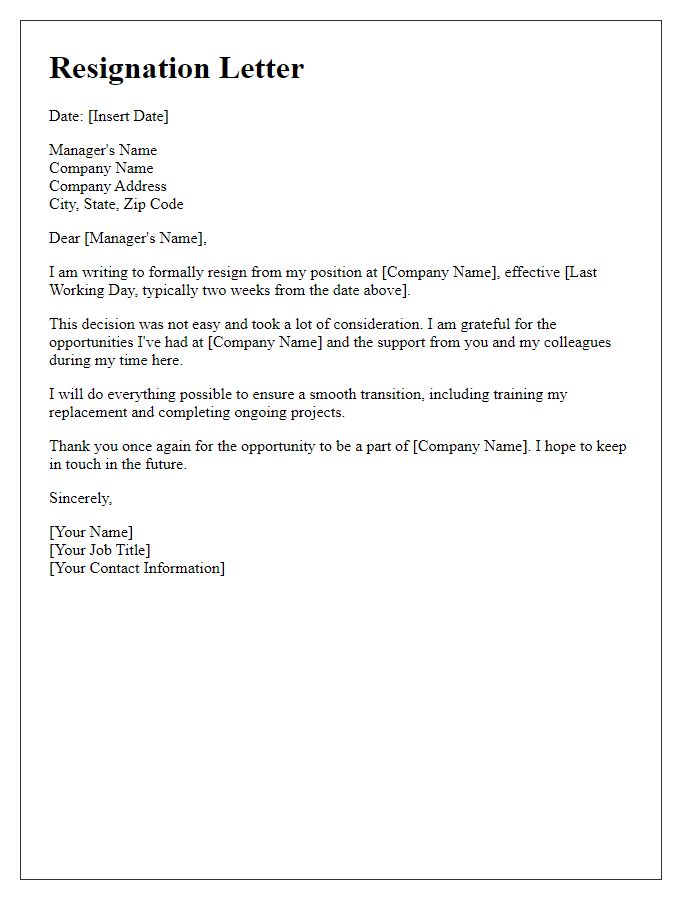Are you considering stepping down from your management position? It can be a significant decision, filled with various emotions and considerations. Crafting a resignation letter that reflects your gratitude and professionalism is key to leaving a lasting positive impression. If you're ready to take the next step in your career journey, keep reading for tips on how to write the perfect resignation letter!

Professional tone and respectful language
Resigning from a management position often involves careful consideration and communication. A well-crafted resignation letter should reflect professionalism and respect toward the organization and its members. Deciding to resign can be influenced by various factors, including personal growth, career advancement, or changes in personal circumstances. When composing a resignation letter, it's essential to express gratitude for the opportunities provided during your tenure. Mentioning specific experiences or skills gained highlights appreciation and acknowledges the support from your colleagues and supervisors. The resignation letter should clearly state the intended last working day, typically providing at least two weeks' notice in accordance with company policy. This timeframe allows for a smooth transition, enabling the organization to manage your responsibilities effectively. Concluding the letter on a positive note reinforces goodwill, offering to assist with the transition or to stay connected in the future. Overall, the letter serves not just as a formal notification but as a chance to leave a lasting impression that reflects professionalism and respect.
Clear statement of resignation
Resigning from a management position can be a significant decision that often involves clear communication with stakeholders. The resignation should be communicated professionally, outlining key details such as the effective date, reasons for the departure, and appreciation for the opportunities provided. Clarity in the resignation statement is essential to maintaining good relationships and ensuring a smooth transition for both the individual and the organization. Notifying direct reports and ensuring a comprehensive handover plan contributes to organizational stability post-resignation.
Notice period and last working day
Notice of resignation typically marks a significant transition in one's professional journey. A management position involves overseeing teams, strategic planning, and maintaining operational standards. Formal notice (often two weeks to one month, depending on company policy) provides an opportunity for an effective handover process. Specifying the last working day (e.g., September 30, 2023) aids in clarity for both the employer and employees. It is crucial to maintain professionalism to ensure positive relationships and potential future networks. Expressing gratitude for experiences gained while outlining intended next steps can leave a lasting positive impression.
Expression of gratitude
Resigning from a management position involves a significant decision that often deserves a thoughtful approach. A well-crafted resignation letter can ensure that you leave on a positive note, maintaining professional relationships. An effective resignation letter expresses gratitude for the opportunities provided during your tenure. Highlight specific experiences or projects that contributed to your development and skills. Acknowledge the leadership and support received from colleagues and superiors, emphasizing the collaborative environment shared with the team. This expression of appreciation fosters goodwill and may open doors for future professional networking or opportunities.
Offer to assist during transition
Resigning from a management position often requires careful communication and professional etiquette. Consider the following best practices while drafting your resignation letter. Clearly state the position being resigned, along with the anticipated final workday, allowing for a typical two-week notice period. Highlight appreciation for opportunities and experiences gained while in the role, particularly reflecting on team achievements. Offer assistance in the transition process, indicating a willingness to train a successor and complete current projects. Maintain a positive tone, ensuring lasting professional relationships. When you're ready to proceed, follow these steps: Address the letter formally, present a concise resignation statement, express gratitude, outline your readiness to help with the transition, sign off cordially, and use professional formatting. This approach promotes a smooth exit that respects both your needs and those of the organization.













Comments